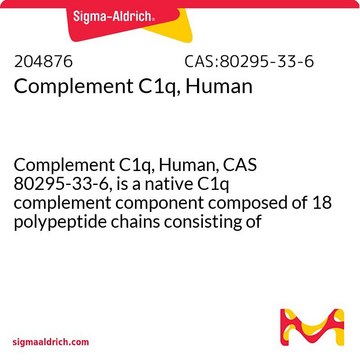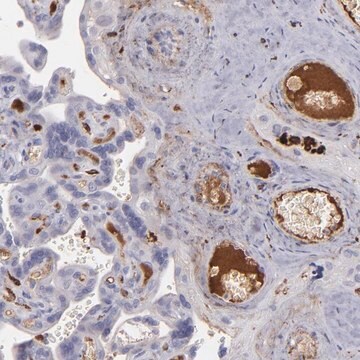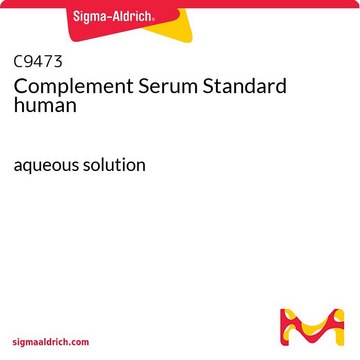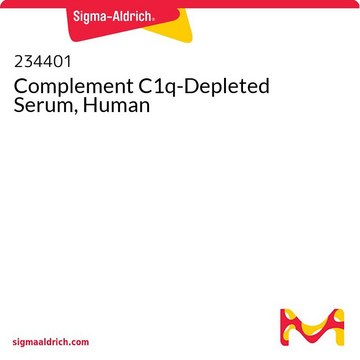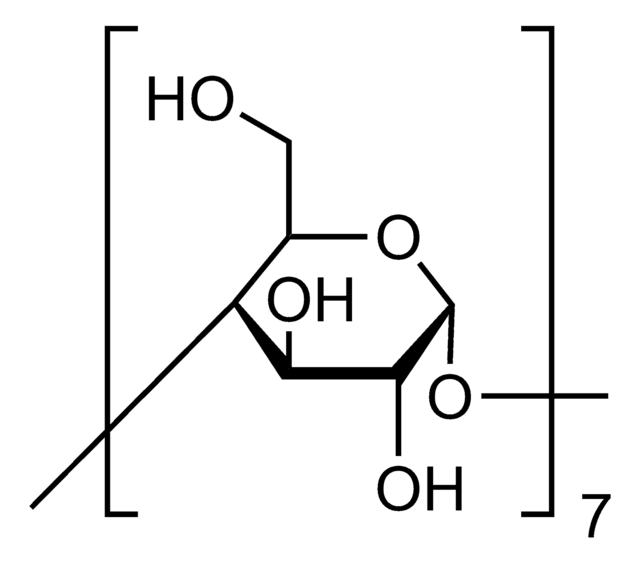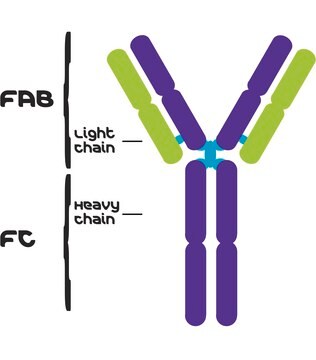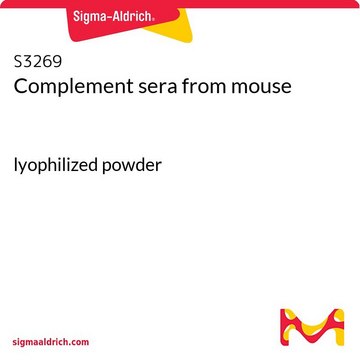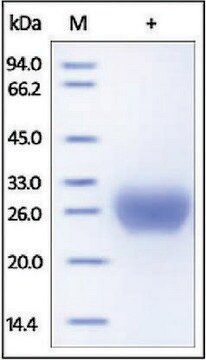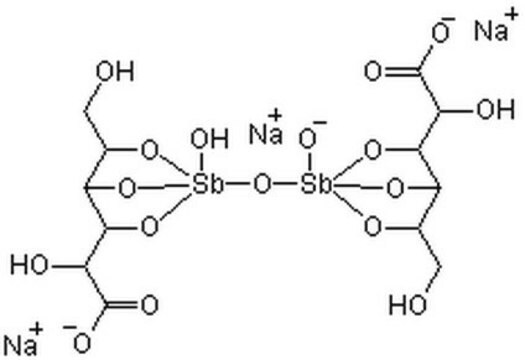추천 제품
일반 설명
C1q, together with C1r and C1s, in the ratio of 1:2:2, form the C1 complex which is the first component of the classical complement pathway. C1q is composed of 18 polypeptide chains (six A, six B, six C) (MW 460 kDa). All contain an 81-aa collagen-like region composed of (Gly-Xaa-Yaa) repeating sequences close to the N-terminus. Three chains (A1B1C1) form a triple helix with the C-terminus forming the globular heads which may be structurally and functionally distinct domains.
애플리케이션
Complement component C1q is an important regulator factor for platelet activation. This has been a topic for research, as platelet-leukocyte aggregates play an important role in inflammatory conditions such as coronary heart disease. In particular, C1q has been shown to inhibit collagen induced aggregation and enhance production of reactive oxygen species (ROS).
생화학적/생리학적 작용
C1q deficiency, either because of rare homozygous genetic defect, or transcriptional/translational defects, is almost certainly a cause of systemic lupus erythematosus (SLE). The three C1q subunits are expressed through a novel mechanism of transcriptional synchronization.
물리적 형태
Supplied as a solution in 10 mM HEPES, 300 mM NaCl, pH 7.2
Storage Class Code
10 - Combustible liquids
WGK
WGK 3
Flash Point (°F)
Not applicable
Flash Point (°C)
Not applicable
시험 성적서(COA)
제품의 로트/배치 번호를 입력하여 시험 성적서(COA)을 검색하십시오. 로트 및 배치 번호는 제품 라벨에 있는 ‘로트’ 또는 ‘배치’라는 용어 뒤에서 찾을 수 있습니다.
이미 열람한 고객
Consol Farrera et al.
Journal of immunology (Baltimore, Md. : 1950), 191(5), 2647-2656 (2013-08-02)
Neutrophil extracellular traps (NETs) facilitate the extracellular killing of pathogens. However, in recent years, excessive NET formation has been implicated in several pathological conditions. Indeed, NETs that are not removed from tissues or from the circulation might serve to trigger
Allison R Bialas et al.
Nature neuroscience, 16(12), 1773-1782 (2013-10-29)
Immune molecules, including complement proteins C1q and C3, have emerged as critical mediators of synaptic refinement and plasticity. Complement localizes to synapses and refines the developing visual system through C3-dependent microglial phagocytosis of synapses. Retinal ganglion cells (RGCs) express C1q
Andrew D Greenhalgh et al.
The Journal of neuroscience : the official journal of the Society for Neuroscience, 34(18), 6316-6322 (2014-05-03)
Macrophages in the injured spinal cord arise from resident microglia and infiltrating, peripherally derived monocytes. It is still not clear if macrophages derived from these two populations differ in their roles after CNS injury. The aims of this study are
Eduardo Sosoniuk et al.
Molecular immunology, 60(1), 80-85 (2014-04-29)
Trypanosoma cruzi, the agent of Chagas' disease, the sixth neglected tropical disease worldwide, infects 10-12 million people in Latin America. Differently from T. cruzi epimastigotes, trypomastigotes are complement-resistant and infective. CRPs, T-DAF, sialic acid and lipases explain at least part
Maria Cecilia S Freitas et al.
Transplantation, 95(9), 1113-1119 (2013-03-22)
Anti-HLA-DQ antibodies are the predominant HLA class II donor-specific antibodies (DSAs) after transplantation. Recently, de novo DQ DSA has been associated with worse allograft outcomes. The aim of this study was to determine the further complement-binding characteristics of the most
자사의 과학자팀은 생명 과학, 재료 과학, 화학 합성, 크로마토그래피, 분석 및 기타 많은 영역을 포함한 모든 과학 분야에 경험이 있습니다..
고객지원팀으로 연락바랍니다.